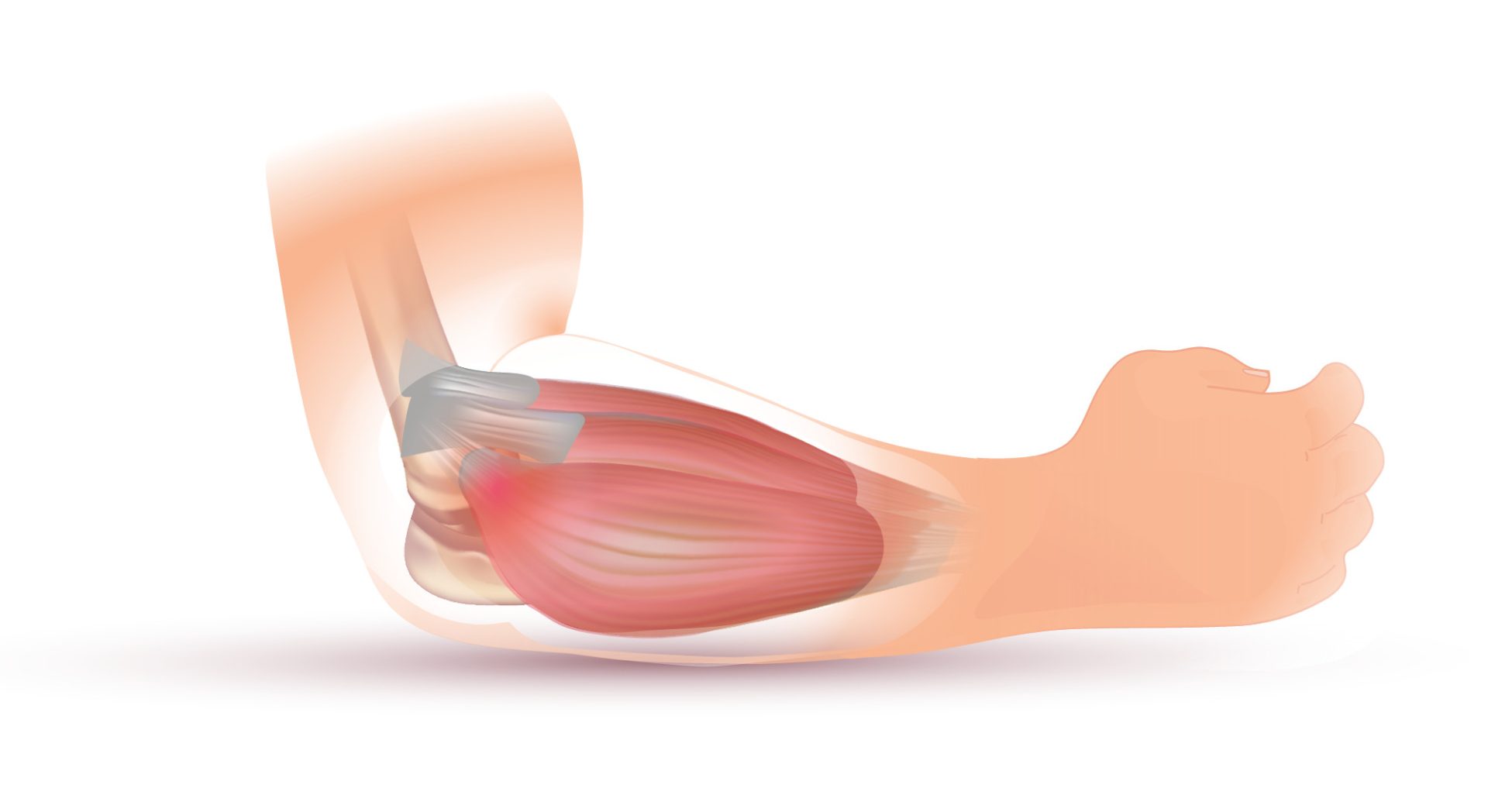Lateral epicondylitis, commonly known as Tennis Elbow, is a condition characterized by pain and tenderness on the outer side of the elbow. Despite its name, tennis elbow will often occur in individuals who don’t play tennis. It can be caused by activity which increases the load through, or overloads, the forearm muscles. The condition primarily affects the tendons that attach to the bony prominence on the outside of the elbow.
Managing tennis elbow involves a comprehensive approach to reduce pain, promote healing, and restore function. Physiotherapy plays a crucial role in the treatment process, helping individuals alleviate symptoms, improve strength and flexibility, and prevent reoccurrence.
The treatment of tennis elbow typically involves the following the 5 stages of rehab:
- Pain management: The initial focus is on managing pain and reducing inflammation in the affected area. Physiotherapists employ various techniques such as manual therapy, including soft tissue massage and joint mobilization, to alleviate pain. They may also recommend the use of ice therapy, which can help to reduce inflammation and provide temporary pain relief.
- Range of motion: Once pain is under control, the emphasis shifts to restoring normal range of motion in the elbow joint. Physiotherapists often prescribe gentle stretching exercises and joint mobilizations to improve flexibility and alleviate stiffness. These exercises aim to gradually increase the range of motion without exacerbating the symptoms.
- Motor control: This stage focuses on improving the control and coordination of the forearm muscles, helping to optimize force distribution and prevent further injury. Physiotherapists prescribe specific exercises to enhance muscle activation and stability in the forearm. They may also provide guidance on modifying activities and using proper technique to reduce strain on the affected tendons.
- Strengthening: Strengthening the forearm muscles is crucial for promoting healing and preventing future episodes of tennis elbow. Range physiotherapists will design a progressive exercise program that targets the muscles involved in wrist extension and grip strength. This may include exercises with resistance bands, dumbbells, or specialized equipment to gradually build strength and endurance.
- Maintenance: The final stage focuses on maintaining the gains achieved through rehabilitation and preventing recurrence. Range physiotherapists will provide guidance on maintaining an appropriate exercise program, including stretching and strengthening exercises for the forearm. They may also provide advice on ergonomic modifications, proper equipment use, and techniques to prevent overuse and repetitive strain.
In addition to physiotherapy, other treatment options for tennis elbow may include the use of shockwave therapy, braces or straps to provide support and reduce strain on the affected tendons. Nonsteroidal anti-inflammatory drugs (NSAIDs) or corticosteroid injections may also be prescribed to manage pain and inflammation in more severe cases.
It is important to work closely with a qualified physiotherapist who specializes in treating tennis elbow. Range physiotherapists will assess your condition, develop a tailored treatment plan, and monitor progress throughout the rehabilitation process. With proper treatment, exercises, and modifications to activities, individuals with tennis elbow can experience significant pain reduction, improved function, and a return to their desired level of activity.
For more information regarding tennis elbow please see: https://www.physio-pedia.com/Lateral_Epicondylitis?utm_source=physiopedia&utm_medium=search&utm_campaign=ongoing_internal
https://www.healthline.com/health/tennis-elbow#prevention


